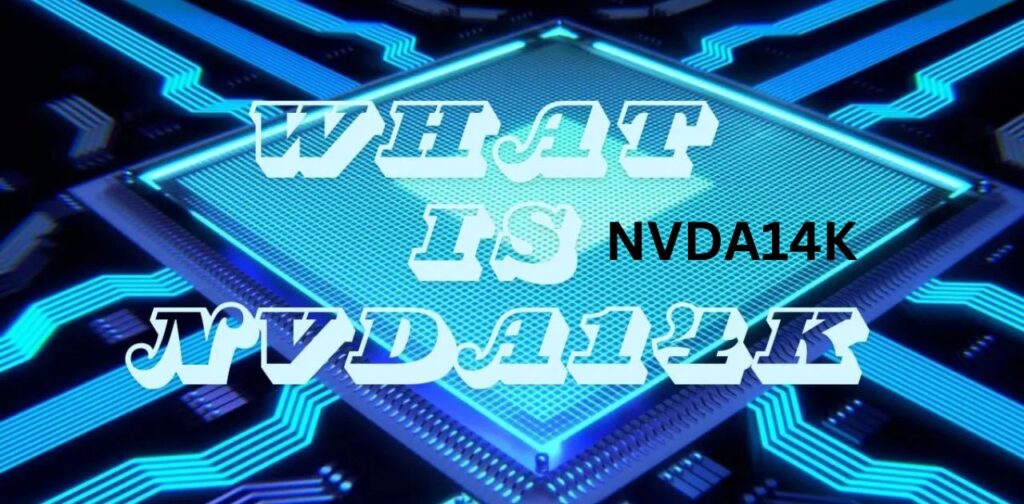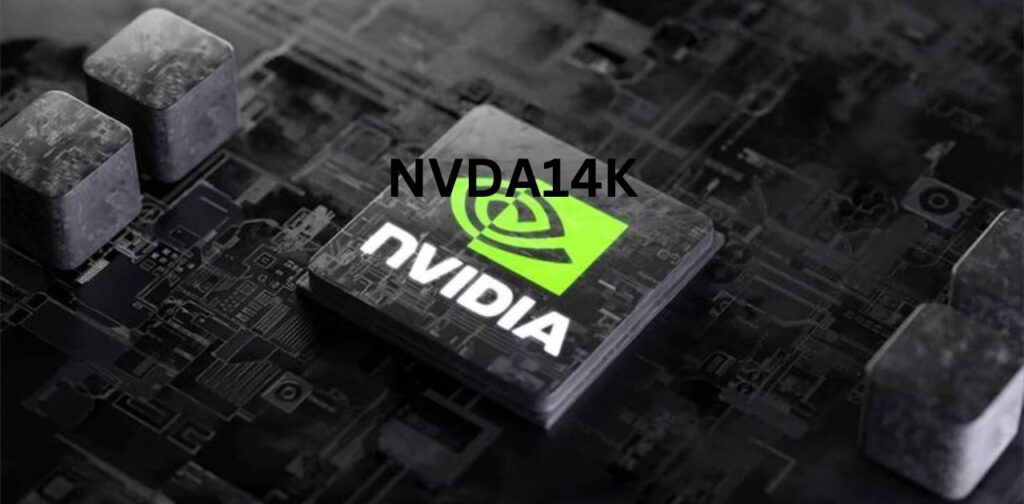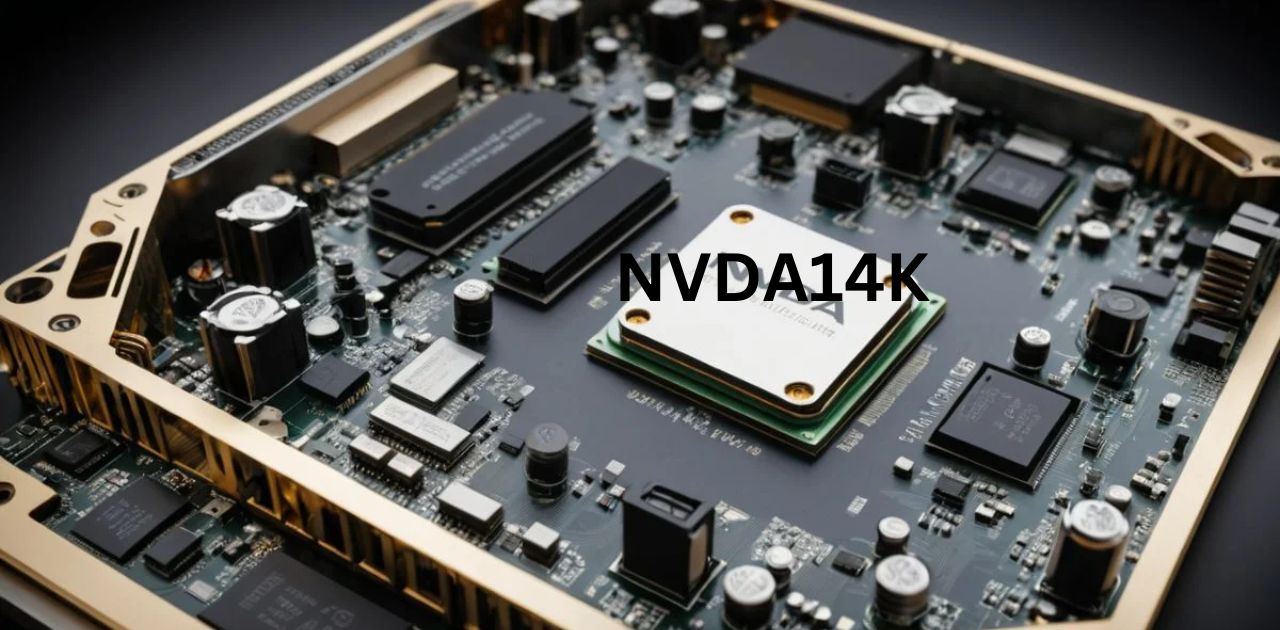Artificial intelligence is evolving at breakneck speed, with technological advancements like NVIDIA’s NVDA14K pushing the boundaries of what AI can achieve.
This article dives deep into the significance of NVDA14K in AI development, examining its architectural innovations, impact on AI research, and transformative applications across diverse industries.
For the U.S. audience, NVDA14K isn’t just another GPU; it’s a critical piece of hardware reshaping AI capabilities, from natural language processing to autonomous vehicles.
NVIDIA’s Role in AI Evolution
NVIDIA’s Journey in AI Development
NVIDIA’s role in AI development is nothing short of pioneering. Initially known for its graphics processing units (GPUs) in gaming, NVIDIA has since harnessed its powerful hardware for advanced AI applications. By optimizing GPU architecture for deep learning and machine learning, NVIDIA became an essential player in AI research and data-driven decision-making systems.
Key Innovations in NVIDIA’s GPUs
NVIDIA’s influence stems from a suite of innovations aimed at high-performance AI:
- CUDA (Compute Unified Device Architecture): Allows developers to leverage parallel computing for AI models.
- Tensor Cores: Enhance processing efficiency for deep learning tasks, making it easier to train complex neural networks.
- NVDA14K: The latest iteration tailored specifically for AI-intensive workloads, built with scalability, flexibility, and energy efficiency.
NVIDIA’s transition from gaming hardware to AI-specific technology has enabled breakthroughs in neural networks and AI models, setting a high standard for hardware-driven AI solutions.
AI-Specific Hardware: The Need and the Solution
With the rapid expansion of AI and deep learning models, general-purpose CPUs cannot meet the intensive processing demands. This has spurred the need for AI-specific hardware, where NVDA14K shines as a solution. Unlike traditional hardware, NVDA14K is designed to handle the complex calculations required by AI applications:
- Parallel Processing: Processes large datasets simultaneously, supporting real-time AI applications.
- Scalability: Adaptable to fit diverse AI needs, from small startups to large enterprises.
- High Memory Bandwidth: Crucial for processing large datasets effectively, a hallmark of NVDA14K’s architecture.
AI-specific hardware like NVDA14K provides the backbone for AI systems, enabling industries to leverage machine learning for real-world applications.
Accelerating AI Research with NVDA14K

Boosting Computational Power for AI Models
AI research requires high computational power, particularly for data-driven decision-making. NVDA14K facilitates this by dramatically improving processing speeds and enhancing model accuracy. By handling complex AI models and reducing training times, NVDA14K empowers researchers to tackle ambitious AI projects.
Key Areas Impacted by NVDA14K
With NVDA14K, AI research is no longer hindered by hardware limitations. This GPU supports AI algorithms across fields, including:
- Natural Language Processing (NLP): Powers language translation, voice recognition, and chatbots.
- Computer Vision: Enables advancements in facial recognition, autonomous driving, and healthcare imaging.
- Robotics: Real-time data processing for autonomous functions in industrial and service robots.
NVDA14K provides the necessary infrastructure for researchers to advance AI algorithms and optimize data processing, directly impacting fields like NLP and computer vision.
The Architecture of NVDA14K: A Closer Look
Core Design and Scalability
NVDA14K’s architecture is a powerful combination of high memory bandwidth, numerous cores, and parallel processing capabilities:
| Feature | Description |
| Parallel Cores | Supports multiple AI processes at once, reducing bottlenecks. |
| Memory Bandwidth | Enables rapid access to large datasets, crucial for deep learning models. |
| Tensor Processing Units | Optimized for AI tasks, enhancing machine learning performance and efficiency. |
Comparison to Previous NVIDIA GPUs
Unlike past GPUs, NVDA14K is specifically engineered for AI development, with advancements in scalability and flexibility. For instance, NVDA14K’s memory bandwidth is double that of NVIDIA’s previous models, making it ideal for complex AI models and large-scale data processing.
Applications of NVDA14K in Key Industries
NVDA14K’s influence extends beyond academia and tech; it’s driving AI applications in industries ranging from healthcare to autonomous vehicles. Here’s how:
- Healthcare: NVDA14K is powering AI-driven diagnostics, enabling real-time data analysis in medical imaging for personalized treatments.
- Finance: Its processing power aids in fraud detection, risk management, and algorithmic trading, streamlining financial operations.
- Autonomous Vehicles: Essential for real-time sensor processing and decision-making, NVDA14K advances the safety and efficiency of self-driving technology.
- Energy Sector: By analyzing complex energy data and optimizing distribution, NVDA14K plays a role in sustainable energy management.
Each of these industries relies on NVDA14K’s hardware to enhance data-driven decision-making, highlighting its versatility in AI development.
NVDA14K’s Contribution to AI Research
Natural Language Processing (NLP)
With NVDA14K’s high memory bandwidth and parallel computing capabilities, NLP has advanced significantly. NVDA14K allows for faster, more accurate language models essential for applications like translation, voice recognition, and sentiment analysis.
Computer Vision
NVDA14K is transforming computer vision by supporting complex visual processing tasks, from facial recognition to object detection in autonomous systems. This has applications in security, retail, and even healthcare for analyzing medical imaging.
Robotics
In robotics, NVDA14K’s processing power enables robots to analyze sensory data in real-time, facilitating precise movements and decision-making. From warehouse robots to autonomous drones, NVDA14K plays a crucial role in advancing robotic capabilities.
Energy Efficiency and Sustainability of NVDA14K
Reducing Power Consumption
One of NVDA14K’s standout features is its focus on energy efficiency. By reducing power consumption while maintaining high performance, it aligns with sustainability goals, an increasingly important consideration in AI development.
Sustainability in AI Development
NVDA14K’s eco-friendly design is critical as industries aim to minimize their environmental impact. Its energy-efficient structure reduces the carbon footprint of large-scale data centers, allowing AI applications to grow without exacerbating energy consumption.
The Software Ecosystem of NVDA14K

CUDA
CUDA is NVIDIA’s proprietary software that enables NVDA14K to achieve high-performance computing by allowing developers to optimize their AI applications. CUDA is essential for deep learning models and parallel processing.
TensorFlow and PyTorch Integration
NVDA14K’s seamless integration with TensorFlow and PyTorch makes it a top choice for developers. This integration allows for scalability and flexibility in AI research, enabling AI algorithms to run more efficiently on NVDA14K’s powerful hardware.
NVDA14K’s Role in AI-Driven Innovation
AI in Smart Cities
NVDA14K supports AI applications in urban planning, traffic management, and smart infrastructure by providing the computational power needed for real-time data analysis. Smart cities rely on data-driven decision-making enabled by NVDA14K to improve city life.
AI in Education
In education, NVDA14K powers adaptive learning systems, analyzing student performance to create personalized learning paths. Schools and universities benefit from AI-driven insights for improving teaching methods and administrative efficiency.
The Future of NVDA14K in AI Development
AI and Quantum Computing
As AI merges with quantum computing, NVDA14K could bridge the gap between classical processing and quantum capabilities, further advancing AI innovation.
Broadening AI Accessibility
NVDA14K’s scalable design makes AI technology accessible to smaller enterprises, democratizing AI development and empowering innovation across sectors.
Conclusion
NVDA14K is more than a GPU; it’s an enabler of the next frontier in AI development. From enhancing natural language processing to advancing robotics, NVDA14K’s architecture and energy-efficient design signify a new era for AI hardware.
With potential applications in quantum computing and smart city solutions, NVDA14K is shaping the future of AI in ways that will benefit industries, researchers, and society.



